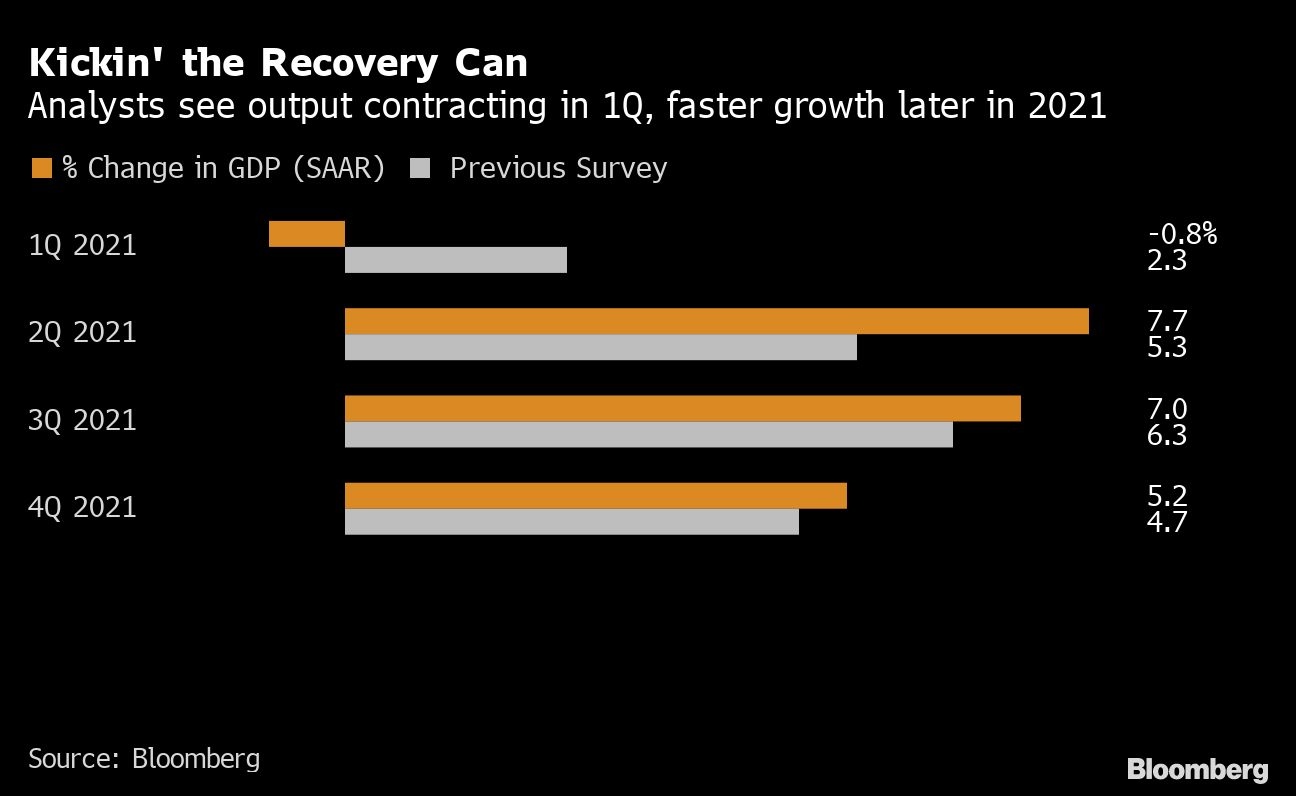Jan 19, 2021
BoC set to look past latest slump in first rate decision of 2021
, Bloomberg News
There will be damage and scarring to the Canadian economy: Former BoC governor
The Bank of Canada is expected to look past a downturn in early 2021 and refrain from adding new stimulus amid expectations for a quick rebound later this year.
Economists unanimously predict policy makers led by Governor Tiff Macklem will leave their key interest rate and asset purchase program unchanged at a 10 a.m. decision Wednesday in Ottawa. Macklem will then hold a press conference at 11 a.m.
There’s been some speculation the central bank may lower its 0.25 per cent policy rate further to counter a downturn in the first quarter of this year, coupled with other headwinds such as rising market interest rates and a strengthening Canadian dollar.
But any near-term concerns are likely to be more than offset by an improving longer-term outlook amid a faster-than-expected vaccine rollout. The end result is Macklem is expected to maintain his holding pattern on policy, waiting for more clarity on how the recovery unfolds before making the bank’s next move.
“The general bias I’d expect to be one in which Governor Macklem looks through near term risks and keeps policy intact,” Derek Holt, an economist at Bank of Nova Scotia, said by phone. “They have to walk a fine line between sounding concerned about the very near term but retaining optimism.”

In his last speech of 2020, Macklem warned the nation’s economy was entering a “difficult stage” amid a second wave of virus cases. While showing little interest in bringing the policy rate into negative territory, bank officials have floated the idea of cutting rates by less than 25 basis points, a so-called micro-cut, if the outlook worsened.
But it’s unclear whether a small rate cut would make much of a difference. The nation’s consumers have already made a strong recovery, helped by aggressive government income support and historically low borrowing costs. Nor would a micro-cut in Canada reverse global trends in currency and bond markets.
Canada’s economy, meanwhile, held up better than anticipated at the end of 2020. Plus, the longer-term outlook is more rosy than when the Bank of Canada last revised its economic forecasts in October. At the time, officials assumed a widespread vaccine wouldn’t arrive before 2022.
“We’re well ahead of that,” Taylor Schleich, strategist at National Bank Financial, said by phone, adding that the inflation outlook is much stronger than the central bank outlined in October.
What Bloomberg Economics Says...
Speculation about a cut smaller than 25 basis points has grown, yet we think the BoC will conclude there is limited value. The housing market and auto sales have recovered strongly, retail sales have regained the pre-pandemic peak, and household disposable income is well above the pre-outbreak level.
-- Andrew Husby, economist
Officials at the Bank of Canada have pledged not to raise their 0.25% overnight interest rate until economic slack in the economy is fully absorbed, something they don’t see happening until 2023.
The vaccine may make that prediction too conservative, economists say, with many now predicting a return to full capacity by 2022.
Yet, while there’s reason for optimism, Macklem’s tone will be measured and he’s unlikely to provide any indication the Bank of Canada plans to pare back stimulus any time soon.
There’s enough downside risks with lockdowns still in place that the bank won’t want to appear hawkish right now, according to Josh Nye at Royal Bank of Canada.
“I don’t think the Bank of Canada wants to strike too optimistic a tone, especially with the speculation the bank could add more stimulus at this meeting,” Nye said by phone. “That would send a more hawkish message than they would want at this stage.”


